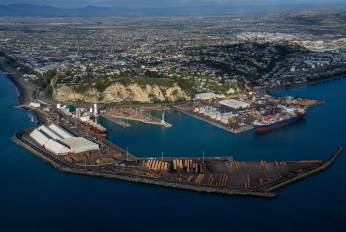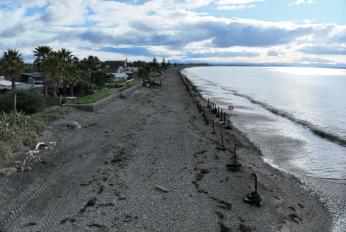Field Trips
Conference Field Trips
Below is an overview of the three field trips on offer at the upcoming NZCS Conference 2025. Registrants are welcome to select one option which is included in your full conference registration ticket*.
*These are limited spaces and subject to availability at the time of registering.
What to bring:
- Footwear suitable for walking
- Layered clothing for any weather eventuality
Field Trips Overview

Field Trip: Napier Port Experience
Inside the Gates: A Behind-the-Scenes Tour of Napier Port Join us for an exclusive tour inside the gates of Napier Port – New Zealand’s fourth largest container port and a critical gateway for the Hawke’s Bay and lower North Island economies.
This guided experience offers NZCS 2025 delegates a unique look at the scale, complexity and environmental considerations of port operations. You’ll board a bus for a drive-through tour of key areas, getting up close to the heavy machinery, vessels and infrastructure that keep goods moving across the region and beyond.
The tour will take in Napier Port’s container terminal, bulk cargo wharves, and marine services, including a stop at the tug berth to view the port’s marine fleet. You’ll also hear about Napier Port’s newest addition – a purpose-built trailing suction hopper dredge (TSHD), currently under construction and arriving in late 2026 through a joint venture with Port Otago. The vessel will enhance regional dredging capability and long-term navigational resilience.
We’ll highlight 6 Wharf – Napier Port’s newest deepwater berth – and the engineering and operational benefits it brings. The tour also includes commentary on the Eastern Beach erosion control project, designed to help protect the port’s coastal edge while working with natural coastal processes.
The final stop is Napier Port’s kororā (little blue penguin) sanctuary. From outside the enclosure, the team will speak to the port’s biodiversity initiatives and ecological monitoring across land and sea.
This is a rare opportunity to go behind the scenes at one of New Zealand’s most active working ports.
Field Trip: Te Whanganui-ā-Orotū (Ahuriri Estuary)
Te Whanganui-ā-Orotū (Ahuriri Estuary) is a culturally and ecologically significant coastal wetland in Hawke’s Bay, shaped by a dynamic history of natural change and human intervention. Once an expansive tidal lagoon, the estuary was significantly altered by the 1931 Napier earthquake, which uplifted the land and drastically altered hydrology and estuarine function. Further diversion and drainage has reduced the wetland extent from 3806ha to its current size of 440ha.
Today, it remains a vital remnant of a once much larger system, providing habitat for migratory wading birds, native fish, and invertebrates, and supporting important mahinga kai values for mana whenua. During our field trip, will we explore the estuary’s history, its diverse habitats, saltmarsh, tidal flats, and remnant channels, and discuss its ecological role as a nursery for marine species. These pressures are compounding with sea-level rise, leading to habitat loss.
The field trip will be a walk and talk style, leaving from Humber Street and walking along the railway bridge before rejoining the boardwalk on the northern side and round Meeannee Quay back to Humber Street.

Field Trip: Coastal Strategy - Southern Cells Visit
Haumoana, Te Awanga and Clifton are some of the areas that are most exposed to coastal erosion and coastal flooding, each one having its unique characteristics. At Haumoana, the flood risk comes from both the Tukituki river and the ocean, hence stop banks, coastal groynes and sea exclusion banks are some of its flood and erosion defences.
At Te Awanga, the same waves, reef and river that create its famous right hander can also cause floods, failure of its drainage system and severe erosion. Clifton, located at the very beginning, of Cape Kidnappers has been undergoing chronic coastal erosion over the past years, regardless of the occasional sediment input from the eroded cliffs of the cape.
This field trip will stop by specific locations at each cell and show the present coastal structures, the main challenges to be tackled, and the solutions proposed by the Hawke’s Bay’s Clifton to Tangoio Coastal Hazards Strategy.

